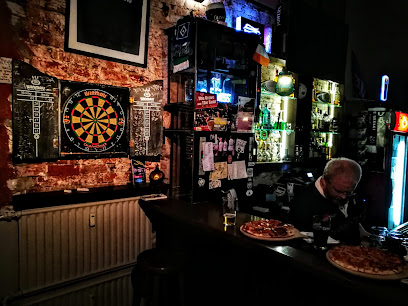
Neuengamme Concentration Camp Memorial
Explore the Neuengamme Concentration Camp Memorial in Hamburg, a place of remembrance, education, and reflection on the atrocities of the Nazi regime and the importance of human rights.
The Neuengamme Concentration Camp Memorial, located in Hamburg, Germany, stands as a solemn reminder of the atrocities committed during the Nazi regime. From 1938 to 1945, Neuengamme was the largest concentration camp in Northwest Germany, where over 100,000 prisoners from across Europe endured forced labor, starvation, and systematic violence. Today, the memorial encompasses a vast 57-hectare site, preserving original buildings and offering poignant exhibitions that detail the camp's history, the suffering of its prisoners, and the crimes of the SS. Visitors can explore the grounds, reflect at the International Monument, and learn about individual stories of resilience and loss. The site serves as a crucial center for remembrance, education, and historical research, urging reflection on the consequences of intolerance and the importance of safeguarding human rights. Admission is free, providing open access to this significant historical landmark.
A brief summary to Neuengamme concentration camp Memorial
- Neuengammer Hausdeich Brücke, Hamburg, Bergedorf, 21039, DE
Local tips
- Allow ample time for your visit; the memorial site is extensive, and the exhibitions are comprehensive and emotionally impactful.
- Check the memorial's website for information on guided tours, educational programs, and temporary exhibitions to enhance your understanding.
- Dress respectfully and wear comfortable shoes, as you will be walking on gravel paths and uneven terrain.
- Consider downloading the Neuengamme app for smartphones, which provides information, historical photographs, and prisoner stories for 113 stations at the Memorial.
- Be prepared for a somber and emotionally challenging experience, and take time for reflection and contemplation.
Getting There
-
Public Transport
From Hamburg's main train station (Hauptbahnhof), take the S-Bahn (S2 or S21) to Bergedorf station. From Bergedorf station, take bus line 127 or 227 to the 'KZ-Gedenkstätte, Ausstellung' bus stop, which is directly adjacent to the memorial's main entrance. The bus ride takes approximately 20-25 minutes. A single ride ticket from Hamburg Hauptbahnhof to the memorial, covering both the S-Bahn and bus, costs approximately €3.50.
-
Driving
From Hamburg, take the Autobahn A25 and exit at Curslack. Follow the signs towards Neuengamme. The memorial is located on Jean-Dolidier-Weg 75. On-site parking is available along Jean-Dolidier-Weg. Parking is free.
Discover more about Neuengamme concentration camp Memorial
Iconic landmarks you can’t miss
Neuengamme concentration camp Memorial
0.0 km
Explore the Neuengamme Concentration Camp Memorial in Hamburg, a place of remembrance, education, and reflection on the atrocities of the Nazi regime and the importance of human rights.
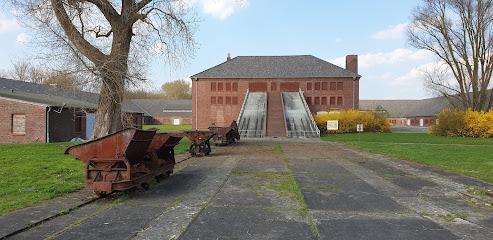
International Maritime Museum
19.6 km
Explore 3,000 years of seafaring history at Hamburg's International Maritime Museum, home to a vast collection of ships, artifacts, and interactive exhibits in a historic HafenCity warehouse.
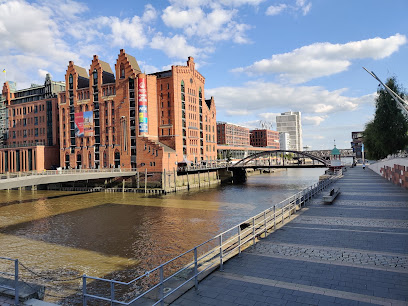
Kleines Leuchtfeuer
19.6 km
Discover the charm of Hamburg's maritime past at the Kleines Leuchtfeuer on Störtebeker Ufer, a picturesque landmark offering stunning waterfront views in the heart of HafenCity.
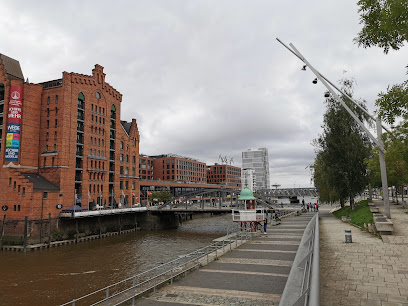
Kornhausbrücke
19.9 km
Cross the historic Kornhausbrücke in Hamburg's HafenCity, connecting the Speicherstadt with stunning views of the Zollkanal, offering a glimpse into the city's maritime past.
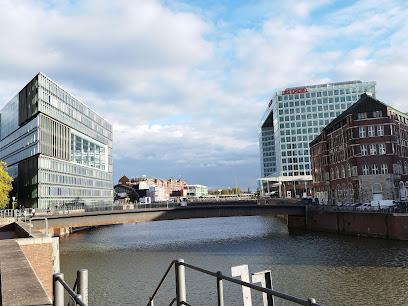
Brooksfleet
20.0 km
Discover the serene beauty of Brooksfleet, a picturesque canal in Hamburg's historic Speicherstadt, offering a tranquil escape and a glimpse into the city's maritime past.
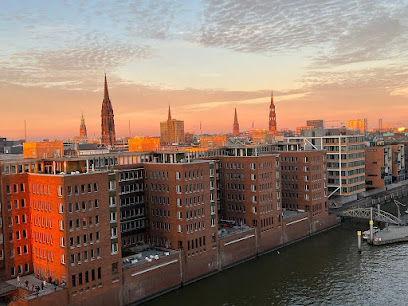
Traditional Ship Port Sandtorkai
20.0 km
Explore Hamburg's maritime history at the Traditional Ship Port Sandtorkai, a vibrant floating museum in the heart of HafenCity, showcasing historic vessels and stunning waterfront views.
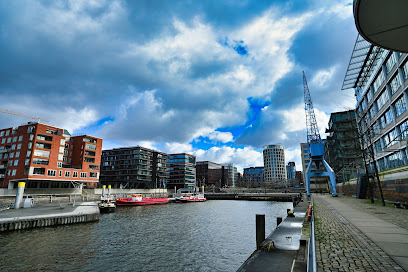
Kibbelstegbrücke
20.0 km
Cross the Kibbelstegbrücke in Hamburg's Speicherstadt for iconic views of historic warehouses and modern architecture, a perfect blend of past and future.
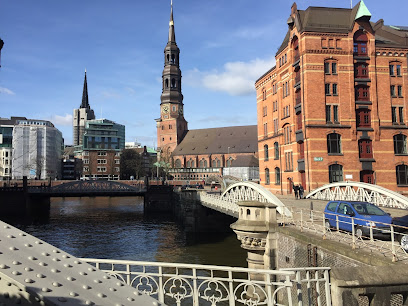
Old Boiler House
20.1 km
Explore Hamburg's industrial past at the Old Boiler House, now the HafenCity InfoCenter, where history meets modern urban development on the picturesque Sandtorkai.
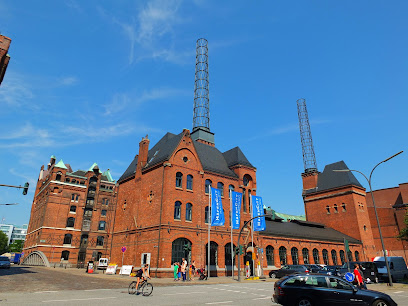
Mönckeberg fountain
20.1 km
Discover the Mönckeberg Fountain in Hamburg: a historic landmark honoring Mayor Mönckeberg, offering a tranquil escape amidst the city's vibrant shopping district and rich cultural tapestry.
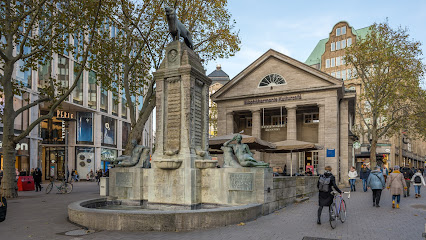
Archaeoscope Hammaburg
20.1 km
Journey back to the 9th century at the Archaeoscope Hammaburg, where virtual reality unveils the origins of Hamburg on the historic Domplatz, the site of the Hammaburg fortress.
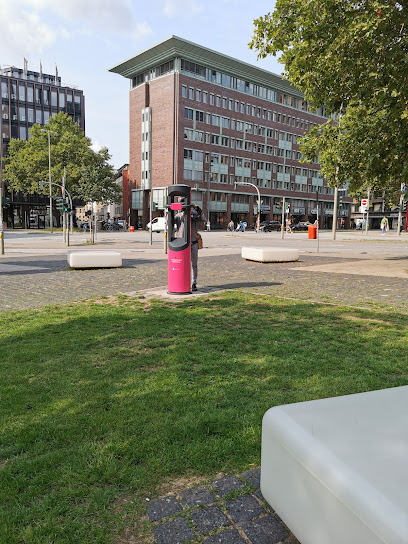
Bishop's Tower
20.2 km
Discover Hamburg's medieval origins at the Bishop's Tower, an archaeological site featuring the remains of a 12th-century defensive structure, now a freely accessible museum and café.
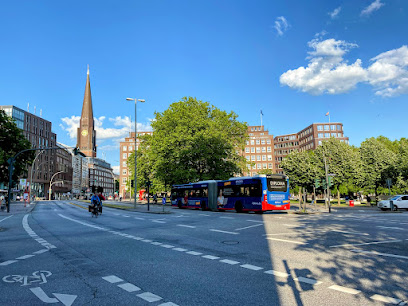
Hamburg Dungeon
20.2 km
Experience 600 years of Hamburg's dark history with live actors, thrilling rides, and immersive storytelling in the heart of the Speicherstadt, a unique blend of horror and humor.
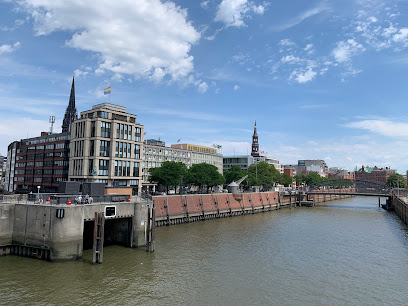
Gerhart Hauptmann Square
20.2 km
Experience the vibrant heart of Hamburg at Gerhart Hauptmann Square, a historic hub where culture, commerce, and city life converge in a dynamic urban setting.
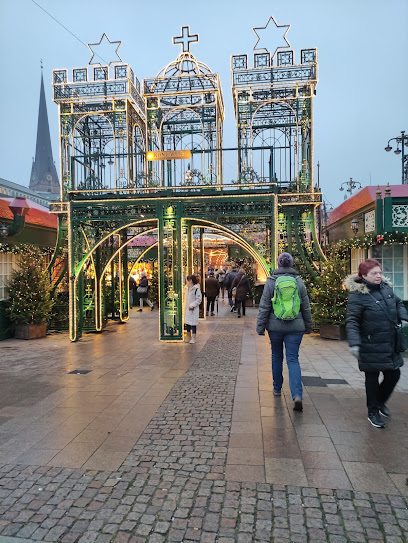
Platz der Deutschen Einheit
20.2 km
Reflect on German history at Platz der Deutschen Einheit in Hamburg's HafenCity, where a piece of the Berlin Wall stands as a symbol of unity near the modern Elbphilharmonie.
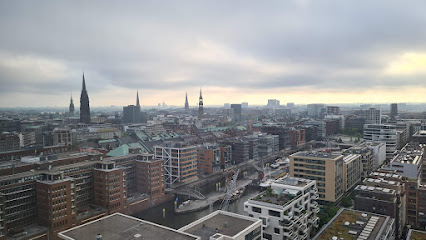
Miniatur Wunderland
20.2 km
Explore the world in miniature at Hamburg's Miniatur Wunderland, the largest model railway exhibit, featuring intricate landscapes and interactive displays for an unforgettable experience.
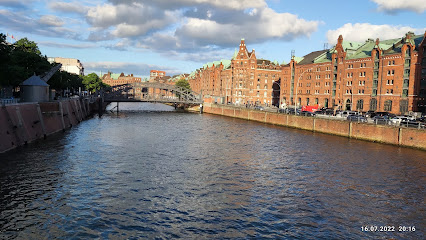
Unmissable attractions to see
schnurstracks Kletterpark Hamburg - Sachsenwald
12.1 km
Explore the thrill of high ropes courses, archery, and more in the heart of Sachsenwald, Hamburg's adventure playground.

Hamburg-Harburg Rathaus
17.0 km
Explore the grandeur of Hamburg-Harburg Rathaus, a historical city hall rich in architecture and local culture, perfect for every tourist's itinerary.
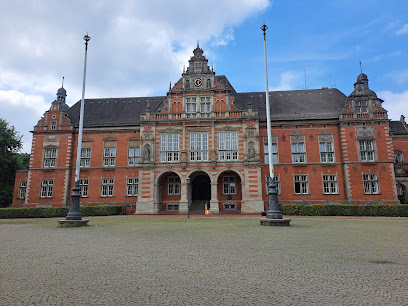
BallinStadt - Emigrant Museum Hamburg
17.2 km
Explore the rich history of emigration at BallinStadt, Hamburg's captivating Emigrant Museum, where personal stories intertwine with historical significance.

Baakenkai
18.1 km
Discover the beauty of Baakenkai in Hamburg, a stunning waterfront destination perfect for relaxation, dining, and enjoying the city's unique charm.
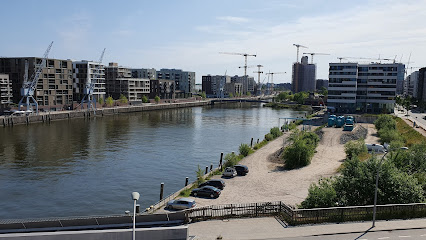
Hamburg lacht!
18.1 km
Discover the cultural heartbeat of Hamburg at Hamburg lacht!, the premier venue for cabaret, concerts, and performing arts.
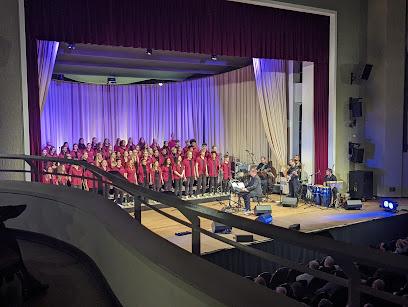
Energiebunker
18.2 km
Discover the Energiebunker in Hamburg: A historical site transformed into a sustainable energy hub with stunning city views.

Deutsches Hafenmuseum - Standort Schuppen 50A
18.4 km
Discover the maritime legacy of Hamburg at the Deutsches Hafenmuseum, showcasing the city's rich shipping history and cultural connections to the sea.
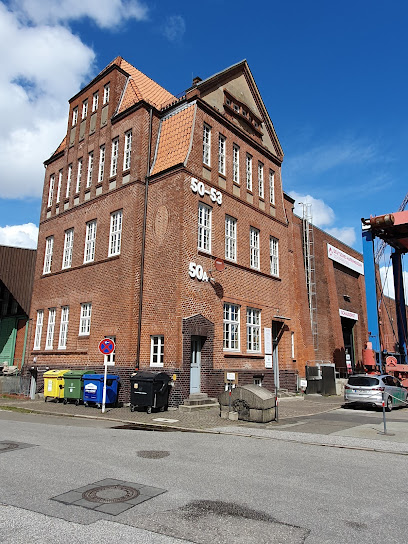
Baakenhafen
18.6 km
Discover Baakenhafen, Hamburg's stunning waterfront with modern architecture, local cuisine, and breathtaking views along the Elbe River.
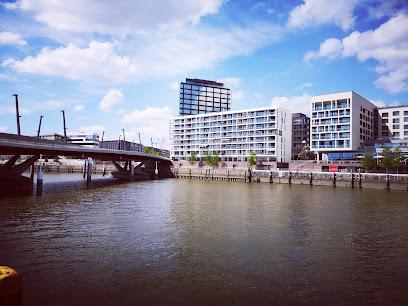
HafenCity Aussichtspunkt
18.8 km
Discover the stunning views of Hamburg's HafenCity from the observation deck, where modern architecture meets the tranquility of the Elbe River.
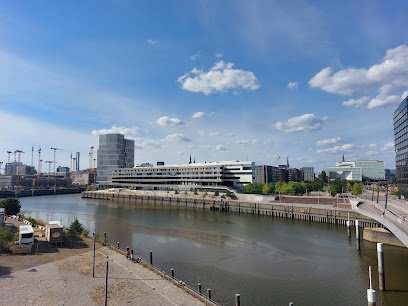
Lighthouse Zero
19.0 km
Experience the maritime charm of Lighthouse Zero, a stunning tourist attraction in Hamburg showcasing rich history and beautiful architecture.
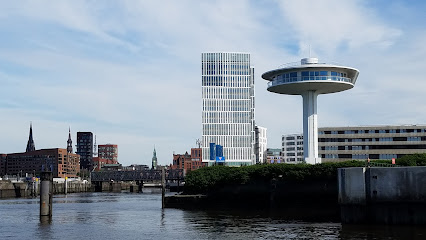
HafenCity
19.0 km
Discover the unique blend of modern architecture and historical charm in HafenCity, Hamburg's vibrant waterfront district, perfect for exploration and relaxation.

Denkmal Hannoverscher Bahnhof
19.1 km
Explore the Denkmal Hannoverscher Bahnhof in Hamburg, a memorial park honoring Holocaust victims, steeped in history and reflective tranquility.
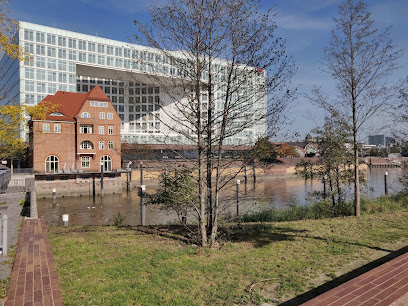
Lohsepark
19.2 km
Discover the tranquility of Lohsepark in Hamburg, a state park filled with lush landscapes, art installations, and serene walking paths.
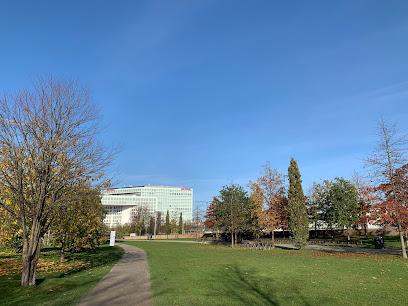
Port of Hamburg
19.3 km
Discover the vibrant essence of the Port of Hamburg, a bustling hub of maritime history and cultural experiences in Germany.
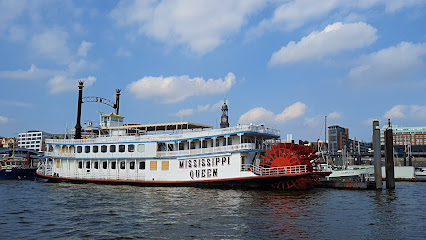
Magdeburger Hafen
19.4 km
Explore Hamburg's Magdeburger Hafen, a serene canal offering stunning views, charming cafes, and a glimpse into the city's rich maritime heritage.
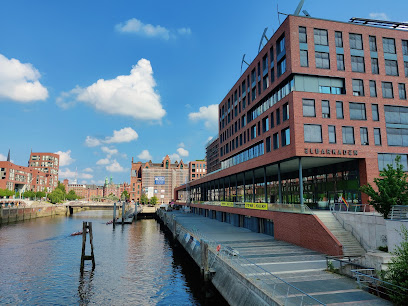
Essential places to dine
Zum Aalkrug
13.2 km
Experience the best of German cuisine at Zum Aalkrug, where fresh seafood meets hearty meat dishes in a cozy atmosphere.

The Table
19.4 km
Experience the pinnacle of fine dining at The Table in Hamburg - where French cuisine meets artistic presentation.
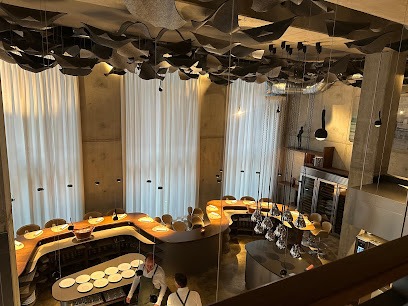
heimat restaurant
19.5 km
Experience authentic German cuisine at Heimat Restaurant in Hamburg, where tradition meets modern culinary artistry.
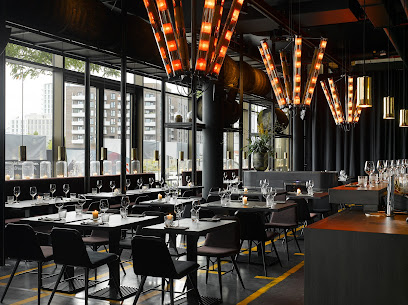
HAMBURG IM SÜDEN
19.5 km
Experience authentic Spanish tapas in the heart of Hamburg at Hamburg im Süden - where flavors meet warmth and hospitality.
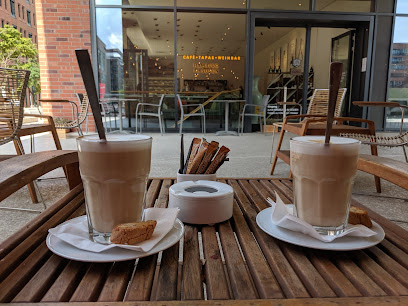
NENI Hamburg
19.6 km
Experience a fusion of Israeli and Mediterranean cuisines at NENI Hamburg – where eclectic flavors meet stunning city views.
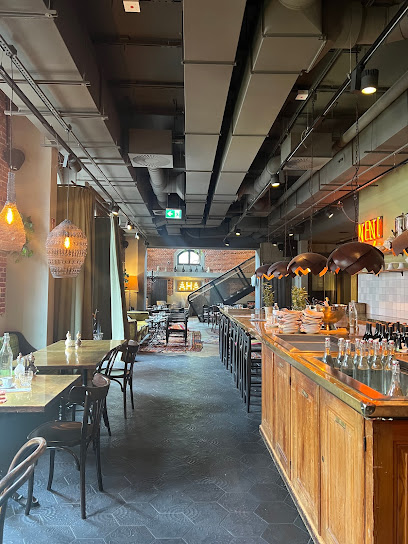
coast by east Hamburg
19.7 km
Discover exceptional sushi and seafood at Coast by East Hamburg – where exquisite flavors meet modern elegance in the heart of the city.

Restaurant Im Sprinkenhof
19.8 km
Experience authentic German cuisine at Restaurant Im Sprinkenhof in Hamburg – where tradition meets modern dining.
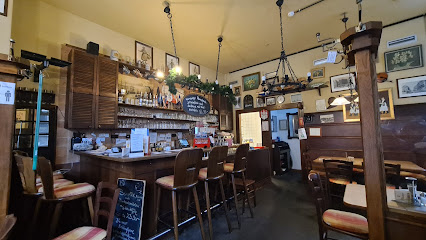
Goa HafenCity Indisches Restaurant
19.8 km
Experience authentic Indian flavors at Goa HafenCity, where tradition meets modernity in Hamburg's vibrant waterfront.
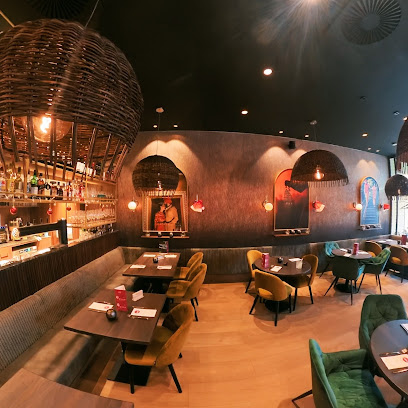
Sala Thai Restaurant
19.8 km
Experience authentic Thai cuisine at Sala Thai Restaurant in Hamburg - where tradition meets flavor in every dish.
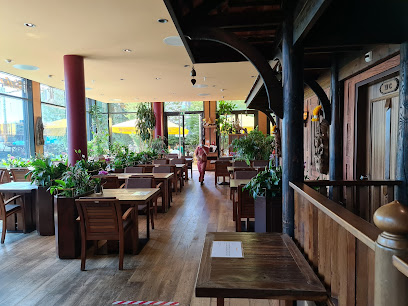
KITCHENS Restaurant & Bar
19.8 km
Experience Hamburg's culinary delights at KITCHENS Restaurant & Bar - where modern cuisine meets vibrant atmosphere along the waterfront.
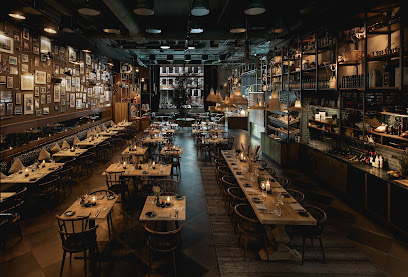
Erdapfel Hamburg
19.8 km
Discover Erdapfel Hamburg - a vibrant vegetarian and vegan restaurant offering fresh, local dishes in a cozy setting.
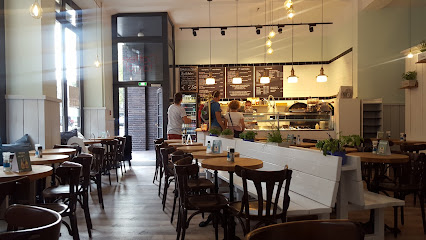
Schönes Leben Speicherstadt
19.8 km
Savor authentic German flavors at Schönes Leben Speicherstadt in Hamburg's historic warehouse district.
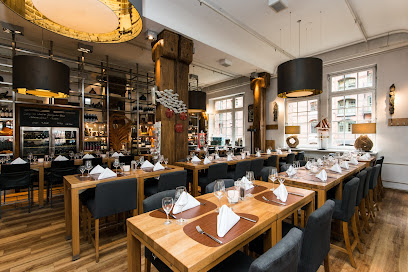
mama trattoria Hamburg Hafencity
19.9 km
Experience authentic Italian cuisine at Mama Trattoria in Hamburg's Hafencity—where every bite feels like a trip to Italy.
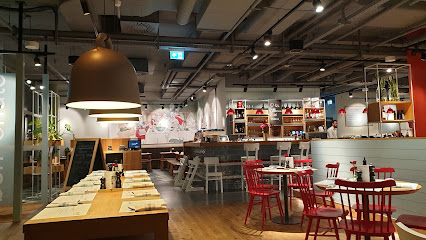
Bootshaus Grill & Bar - Hafencity
19.9 km
Discover Bootshaus Grill & Bar in Hafencity: A premier destination for exquisite dining and handcrafted cocktails in Hamburg's vibrant waterfront.
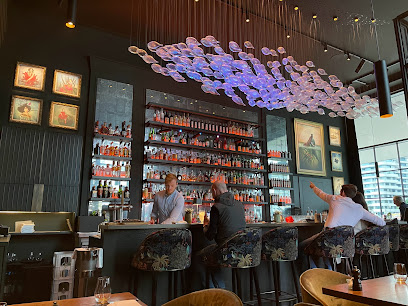
Tschebull Restaurant|Beisl|Bar
20.0 km
Discover authentic Austrian cuisine at Tschebull Restaurant in Hamburg - where tradition meets culinary excellence.
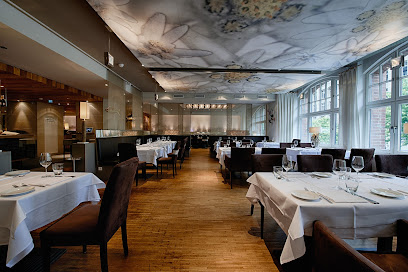
Markets, malls and hidden boutiques
Colors Shop Hamburg Gothic Punk Rockabilly & Boots
18.6 km
Discover unique Gothic, Punk, and Rockabilly fashion at Colors Shop Hamburg, where individuality and style collide in an eclectic shopping experience.

Pop-Up Store, Handgemachtes im Wandsbek Quarree
18.8 km
Explore local artistry at the Handgemachtes Pop-Up Store in Wandsbek, where unique handcrafted treasures await every visitor.

Roots Showroom
18.9 km
Discover Hamburg’s artisan treasures at Roots Showroom, where local craftsmanship meets unique shopping experiences.
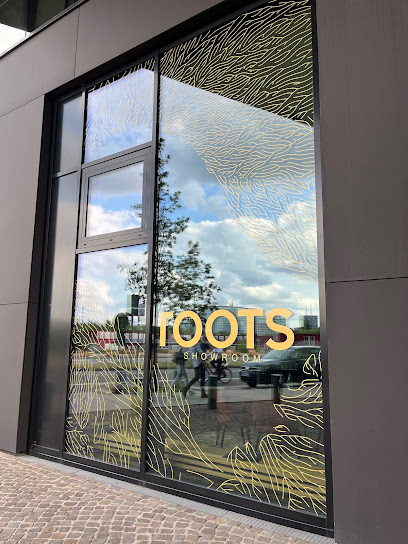
ARTINTECTURE
19.2 km
Explore the fusion of art and architecture at ARTINTECTURE, Hamburg's premier showroom for innovative design and creativity.

Designed by UL
19.3 km
Explore the artistry of handcrafted jewelry at Designed by UL in Hamburg, where elegance meets creativity in every unique piece.

Fashion Cloud
19.5 km
Explore the latest fashion trends at Fashion Cloud in Hamburg-Mitte, where style meets quality in an inviting atmosphere.
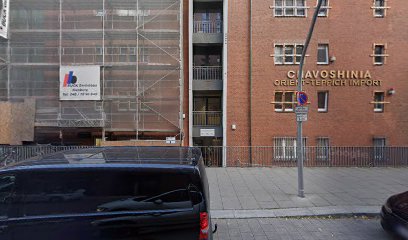
25Things Shop
19.5 km
Discover unique souvenirs and local treasures at Hamburg's 25Things Shop, a must-visit for all tourists seeking the essence of this vibrant city.
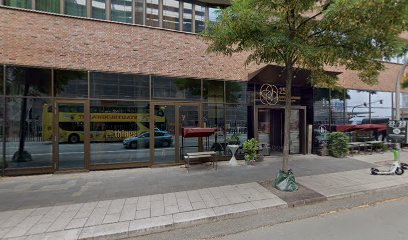
Shop des Maritimen Museums
19.6 km
Discover Hamburg's maritime heritage through unique souvenirs at the Shop des Maritimen Museums, perfect for every traveler.
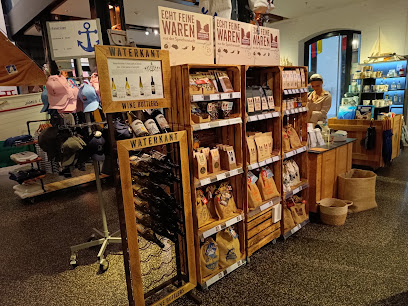
Kunsthaus Hamburg Shop
19.6 km
Explore the enchanting Kunsthaus Hamburg Shop for unique gifts, art books, and a cozy café experience in the heart of Hamburg.
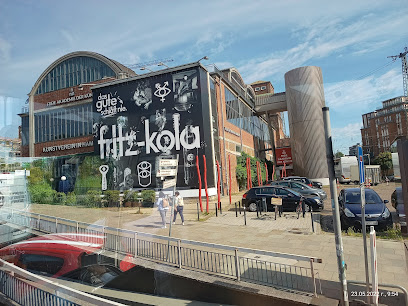
Modekontor Wortmann
19.7 km
Discover the latest trends at Modekontor Wortmann, Hamburg's premier clothing store, where style meets quality in a vibrant shopping experience.
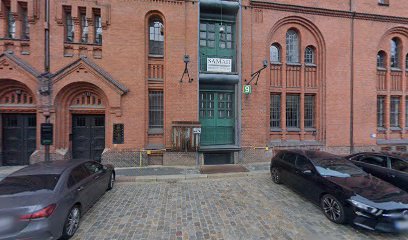
Speicher & Consorten
19.8 km
Discover unique gifts and local delicacies at Speicher & Consorten, a charming shop in Hamburg's historic Speicherstadt.
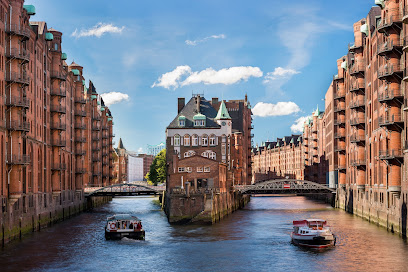
I Love Hamburg
19.9 km
Discover the spirit of Hamburg at I Love Hamburg Souvenir Store, offering unique keepsakes that capture the essence of your journey.

Levantehaus
20.0 km
Discover the elegance of Levantehaus in Hamburg: a shopping mall offering luxury boutiques, diverse dining options, and a vibrant atmosphere.
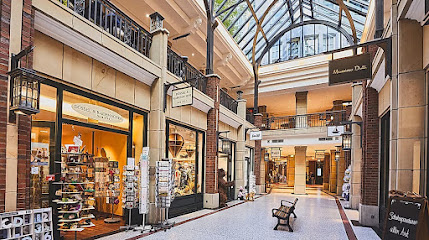
Wandelhalle Hamburg
20.0 km
Discover the vibrant shopping experience at Wandelhalle Hamburg, where modern retail meets cultural events in the heart of the city.
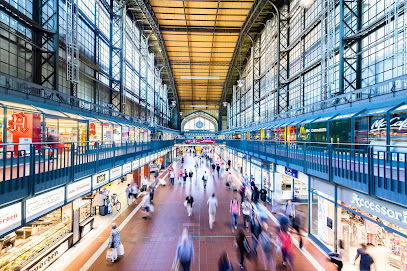
The Art of Hamburg
20.0 km
Explore Hamburg's creative spirit at The Art of Hamburg, where art, fashion, and unique souvenirs create an unforgettable shopping experience.
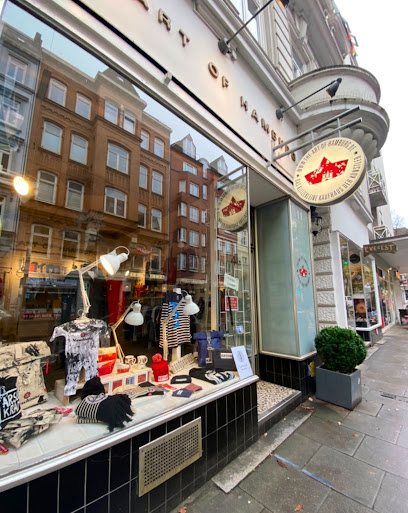
Essential bars & hidden hideouts
Puzzle Bar
19.0 km
Discover the artistic cocktails and vibrant atmosphere of Puzzle Bar, Hamburg's premier destination for nightlife and unique drinks.

BAR11
19.2 km
Experience the vibrant nightlife of Hamburg at BAR11, where unique cocktails and a lively atmosphere await every visitor.

Ilohh - Die Bar am Ende der Welt
19.3 km
Discover Ilohh, Hamburg's vibrant bar offering a unique ambiance, delicious drinks, and a welcoming atmosphere for socializing and relaxation.

Kumpin
19.5 km
Discover Kumpin, Hamburg's chic bar offering a vibrant atmosphere, exquisite drinks, and a perfect spot to unwind after a day of exploring the city.
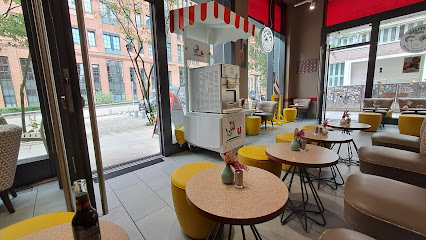
The Boilerman Bar Hafenamt
19.6 km
Discover an extraordinary cocktail experience at The Boilerman Bar Hafenamt, where quality meets creativity in the heart of Hamburg.
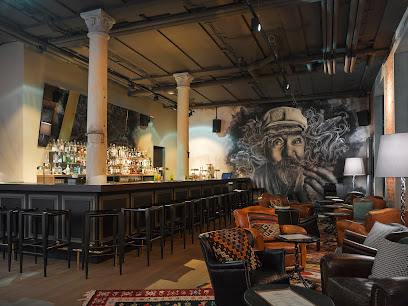
Club 20457
19.7 km
Experience Hamburg's vibrant nightlife at Club 20457, where art meets music in a lively bar setting.
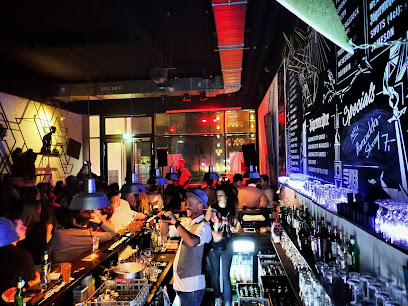
Three Fingers Bar
19.8 km
Experience the vibrant nightlife of Hamburg at Three Fingers Bar, where stunning waterfront views meet expertly crafted cocktails.
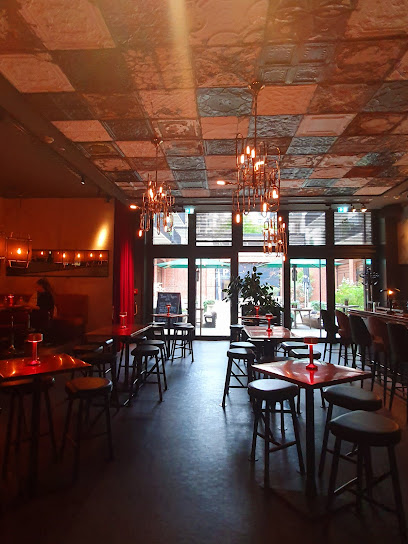
MOON 46
19.8 km
Discover the lively ambiance and exquisite cocktail selection at MOON 46, a must-visit bar in Hamburg's vibrant nightlife scene.
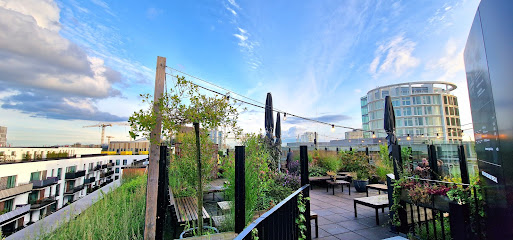
Central Congress
19.8 km
Experience the trendy ambiance and innovative drinks at Central Congress, Hamburg's must-visit bar that caters to every night owl.
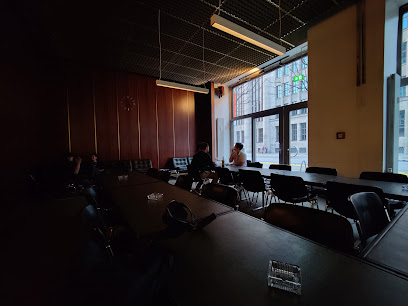
Liquid Garden - Cocktailbar
20.0 km
Discover Liquid Garden, Hamburg's vibrant cocktail bar where creativity and flavor blend for unforgettable nights and unique drinks.

Bar DaCaio Hamburg
20.1 km
Discover the charm of Bar DaCaio in Hamburg, where scenic views meet expertly crafted cocktails in a chic lounge ambiance.

Gugu Bar
20.2 km
Experience the vibrant nightlife of Hamburg at Gugu Bar, where eclectic decor meets an extensive drink menu in a lively atmosphere.
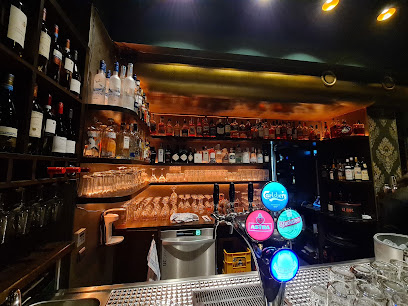
BLICK Bar Elbphilharmonie
20.3 km
Discover Hamburg's stunning skyline while enjoying exquisite cocktails at BLICK Bar Elbphilharmonie, a must-visit gem in the city's nightlife.
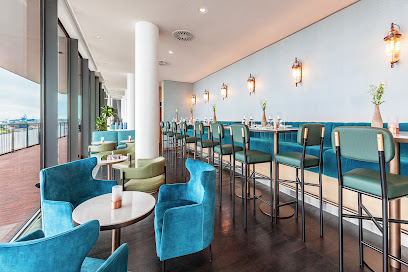
Ba Nomu | Bar
20.3 km
Discover Ba Nomu, Hamburg's cocktail haven, where creativity meets taste in a vibrant, stylish atmosphere perfect for unforgettable nights.

Paddy's Bar
20.3 km
Discover the vibrant atmosphere of Paddy's Bar, Hamburg's favorite Irish pub, offering hearty meals, a wide drink selection, and live music.
